By Larry Boulden
Larry Boulden is the Staff Editor, Design World
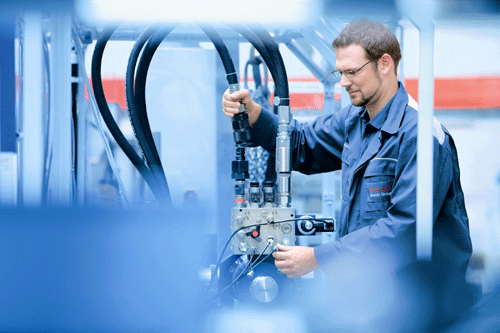
Custom mobile-hydraulics training programs raise operator skills, improve uptime, and increase productivity. Training often includes a series of regularly scheduled courses throughout the year to meet the needs of engineers who are designing new systems, hydraulic-systems maintenance personnel, or those upgrading existing systems with new technology. Courtesy, Bosch-Rexroth.
Designing a mobile system once was simple: start with a gear pump, add manual valves and the necessary actuators, and finish off with an appropriate reservoir, filter, and cooler. But new developments for this key application have brought forth equipment with capabilities that are changing the old design truisms.
Today, system components offer enhanced capability, such as variable piston pumps with integrated digital control systems. Hydraulic control is used today for engine-cooling fans. Sophisticated simulation procedures are available to optimize the system design, and other simulation programs now can help train the operators for safe, economical operation.
Tomorrow, mobile hydraulic systems will incorporate even more sophisticated capabilities to achieve integrated control, including prognostics, speed control, and anti-cavitation prevention. Advances in lightweight accumulators are feeding the trend toward energy-saving hybrid drives. The move toward integrating valves into pumps and motors will continue, as will the trend toward the use of dense, compact manifolds and new hose and fitting technology. These and similar advances act to reduce system part count, minimize the possibility for leaks, and further improve on the already high reliability of mobile hydraulics. Here are some of the recent developments in pumps, controls, training, and actuators that are changing the face of mobile fluid-power systems today.
Integrated valves and controls for mobile applications
If your task is integrating sophisticated controls for mobile applications, these new Hawe components can be assembled into fully integrated systems. New components include proportional directional spool valves (PSL), over-center valves (LHT), and programmable logical valve controls (PLVC). All are designed to handle 6,000 psi pressures.
With these modular designs, Hawe can incorporate many system controls within the valve assembly and control logic, thus providing a much more integrated system than before. These systems also eliminate the need for additional plumbing — saving time, labor, and additional components.
The application engineers at Hawe can review your application details, then provide schematics, general arrangement drawings, and 3-D drawings. This process provides a prototype that leads quickly to production.
Hawe Hydraulics
www.hawehydraulics.com
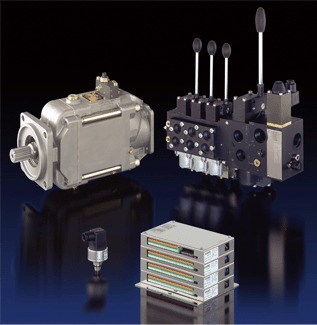
Integrated proportional-control valves
Another new valve package for mobile hydraulics applications is the Ultronics ZTS16 series, which features patented twin-spool architecture, integrated sensors and on-board electronics to offer flexible machine functionality.
These valves offer a choice of interfaces for easy communication with other machine components, adjustment of programmable valve parameters and real-time monitoring of valve performance.
Open architecture lets you develop your own application-level programs using Eaton’s applications development software and EFX controllers, or use you own controller and software. Programmable valve parameters let you rapidly change valve performance over a broad range to cut system development time while optimizing system efficiency and improving productivity. Real-time diagnostics and monitoring with integrated, software-configurable sensors speed new system commissioning, while supporting efficient trouble-shooting in the field. They are rated at 4,350 psi and 34.3 gpm.
Eaton Corp.
www.hydraulics.eaton.com
Integrated accumulators increase load capability
To save space and reduce gas permeation over traditional diaphragm/manifold designs, Parker’s new IAM accumulator integrates a piston-type accumulator directly into an aluminum manifold, making the manifold itself an accumulator. This approach effectively incorporates the accumulator, pilot circuit and switching valve circuit into a single, compact, fully integrated unit.
These composite accumulators weigh significantly less than their steel counterparts, making for lighter vehicles and yielding improved fuel economy or the ability to carry heavier loads. And they provide simpler plumbing and mounting for improved reliability and substantial space savings.
Parker’s IAM design can accommodate up to 1,000-psi operating pressure and features up to a 20 in.3 displacement. It is ideally suited for use on front-end loaders, backhoes, skid steers, aerial and man lifts.
In this type of equipment, hydraulic accumulators are used to provide emergency power to pilot the directional control valve in the event of an engine failure that suspends a load in the air. Traditionally, these accumulators consist of a rubber diaphragm accumulator, usually of about 4-in. diameter, attached to an aluminum manifold of about the same size.
Parker’s IAM design cuts the size of this critical component almost in half by making the manifold itself into an accumulator. A chamber within the manifold houses a piston, which separates the pressurized gas from the stored hydraulic fluid. Should there be an engine failure, energy in the form of pressurized fluid is discharged into the system and used to pilot the directional control valve.
A related development from Parker combines an accumulator with a suspension strut for improved control of suspension motion.
To ensure correct fit and function, all Parker Integrated Accumulator Manifolds are custom-engineered for each OEM application.
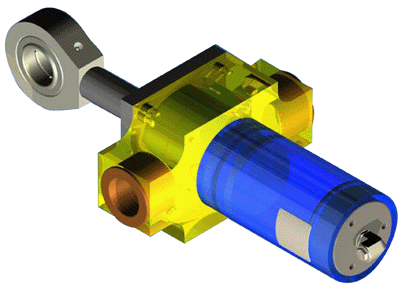
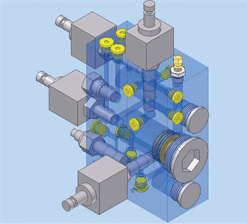
Parker Hannifin Corp.
www.Parker.com/accumulators
Servo-controlled axial piston pumps for mobile equipment
New servo-controlled axial-piston pumps from Eaton Char-Lynn are intended primarily for mobile applications. They typically are combined with a hydraulic motor to supply power for propulsion and operating on-vehicle equipment. They meet the increased power requirements of equipment in the agricultural, construction, and utility markets, and can handle a variety of applications including:
* Pavers, rollers
* Telescopic booms
* Boring and trenching machines
* Rough terrain forklifts, and
* Material handling equipment
Rated at 4,000 psi for continuous operation (5,500 psi max), and up to 75 hp, the new pumps have the high power density that is a key requirement of mobile hydraulics.
The big news about these pumps is the variety of control options:
* Mechanical servo and hydraulic (non-feedback)
* Electro-proportional “EP”
* Proportional valve control with electronic swash plate feedback, for fast response, precise, real-time pump control
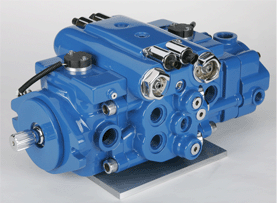
Digital Hydraulic Hybrid Drive System for U.S. Army Vehicles
In a separate development, Eaton Corp. is adapting its advanced digital hydraulic hybrid drive system technology for U.S. Army vehicles. The goal is to develop smaller and lighter drivetrain components, increase fuel efficiency and improve traction and stability for Army tactical vehicles.
“Eaton has proven capabilities in integrating hydraulic, electronic, and mechanical technologies into sophisticated, practical hybrid vehicle drivetrain applications,” said Yannis Tsavalas,
Eaton VP and chief technology officer. “The new hybrid drivetrains will enable the vehicles to carry more armored protection for the soldiers who use them.”
Congressman Fred Upton (R-Mich.), Senator Norm Coleman (R-Minn.) and Congressman
Jim Ramstad (R-Minn.) provided key support in securing the U.S. Army project. “The development of Eaton’s exciting hybrid technologies has the potential to transform the U.S. Army’s fleet of armored vehicles,” said Upton. “There is the real opportunity to improve fuel economy, allowing the vehicles to be out in the field for much longer periods of time before they need refueling.”
Eaton Corp.
www.hydraulics.eaton.com
:: Design World ::
Filed Under: Hydraulic equipment + components, FLUID POWER


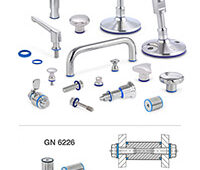
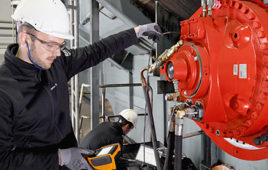
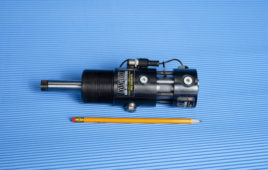
Tell Us What You Think!